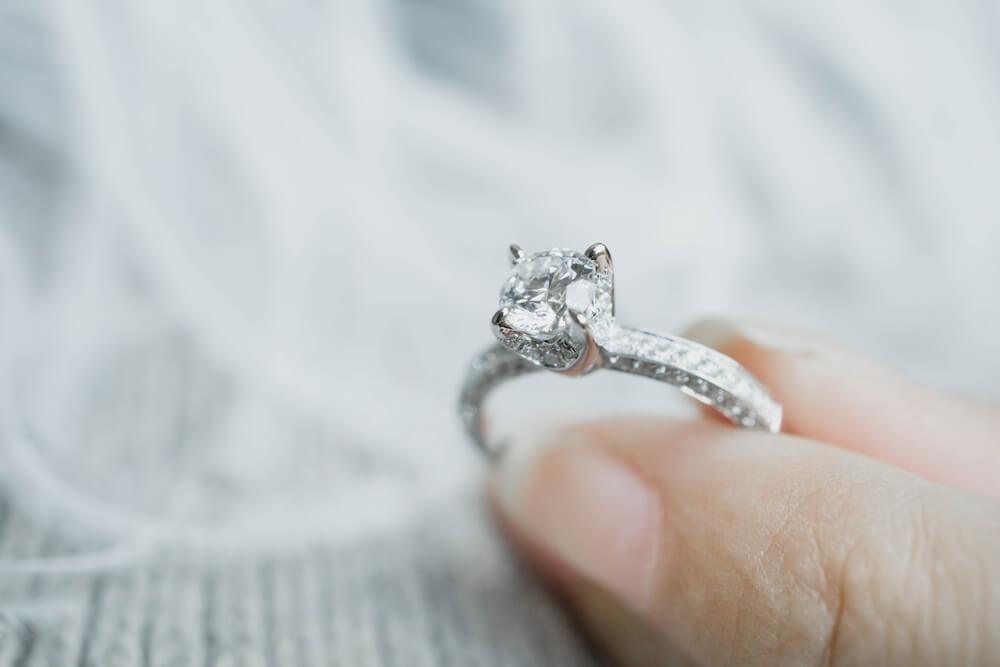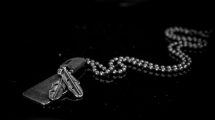As Wedding Know How editors, we write about things that we love and we think you'll like too. We have affiliate partnerships and sponsorship and may generate some revenue from these at no cost to you.
While it might seem like a tiny detail, the number of prongs on your engagement ring setting is an important decision to make. While the number of prongs can range from 3 to upwards of 8 prongs per ring, most solitaire rings feature either 4 or 6.
Is there a big difference between a 4-prong ring and a 6-prong ring? And is one better than the other?
The quick takeaway is that it comes down to subjective preferences and the specific size and shape you choose for the center diamond or gemstone.
Read on for a more detailed discussion on the pros and cons of 4-prong and 6-prong engagement ring settings.
What Are Prongs in Engagement Rings?

Prongs are the elongated projections or metal tips that are used to hold a gemstone in place in a ring setting. Prongs vary in style and shape but the main function of these metal tips is to provide maximum security and beauty to the diamond. The more prongs there are, the more secure the stone is. Alternatively, using fewer prongs reduce security, but it also allows more of the stone’s surface to be visible.
One major misconception about 4 and 6 prong ring settings is that a 4-prong setting makes a diamond appear more brilliant. This isn’t the case, because the brilliance of a diamond comes from its cut quality and not by decreasing the number of prongs holding it. Two extra prongs are too small to impact on the brilliance of the prong setting.
4 Prong vs. 6 Prong Setting – Pros and Cons
4-prong setting vs. 6-prong setting. See more prong ring settings here.
- A ring with 4 strategically placed prongs has less metal covering it, meaning that the diamond is more visible. While fewer prongs doesn’t necessarily affect how brilliant the diamond is, it allows the diamond to take center stage with minimal metal obstruction.
- 4-prong rings give a squarer look to diamonds, because they define four corners of the stone. This makes them an excellent option for square diamond shapes like radiant, cushion, Asscher or princess cuts, as they provide perfect symmetry for these shapes. For round diamonds, a 4-prong setting can give a round-princess hybrid look. However, a 6-prong setting preserves the roundness of the diamond, providing a more continuous circle to the eye.
- Another point is that 4 prongs are not as secure as 6 prongs. While it’s safe enough and a great option for daily wear, 6 prongs have that slight edge in terms of security. If a 4-prong ring loses one of the prongs, the diamond could potentially fall out, whereas if this happens with a 6-prong setting, it’s likely the diamond will still remain securely in position.
- 4 prong settings also don’t provide as much protection for a diamond’s girdle (the thin faceted edge separating the top and the bottom of the diamond), which is a lot more exposed, whereas 6 prongs are set closer together which minimizes the exposed portion of the girdle.

Diamond’s girdle is more exposed with 4-prong settings
- However, if your diamond is a small one, a 4-prong setting will not dwarf it as a 6-prong setting can. For minimalist styles with small gemstones, a 4-prong setting is the way to go. In either case, thinner prongs will enhance the size and beauty of the smaller gemstone.
- The number of prongs also largely depend on the shape of the diamond. For elongated diamonds like marquise or pear, 4 prongs aren’t a practical option. In these cases, 6 prongs provide the best security and stability for the ring.

Marquise Cut Diamond with 6 Prongs by Blue Nile. Check price here.
- Cleaning a 4-prong setting is easier than cleaning a 6-prong ring because it’s easier to reach under the diamond and clean dirt and grime off hard to reach areas.
Which Should You Choose?

The setting you choose comes down to subjective preferences and the overall style of the ring. If you’re in doubt about which option to go for, it’s recommended that you choose the 6-prong setting if you’re diamond is large (around 1 carat or more), simply because it offers that extra bit of security.
If you’re wondering whether the number of prongs impacts on the price of the ring, it doesn’t. The two extra prongs in a 6-prong ring has hardly any impact on the overall price.
The most important thing when choosing either 4 or 6 prong settings is the quality of craftsmanship. Platinum is the best option as it’s the hardest and most durable of the precious metals and doesn’t wear down easily, while 18k and 14k gold are also very good options. Ensure that the prongs have been well made and the stone is well set within the prongs. Have your prongs checked periodically (around once a year) in case of any issues.
According to a few of our readers:
Samantha: I prefer a 6-prong setting over 4-prongs. The 4 prongs just make it look too square in my eyes.
Anita: The way I see it, from the top the 6-prong setting looks a lot nicer but from the side, 4 prongs let you see more of the diamond and less metal. I would go for the 4 prongs because the most important thing in your ring is to see the diamond in all its glory.
Jack: I think it comes down to personal preference and whether you want a square or round look. I proposed to my wife with a 4-prong solitaire engagement ring, but she later had it changed to a 6-prong ring. She likes it a lot more now, but I don’t really see a major difference!
For a more detailed look at prong settings, check out our article here.
If you’re looking to browse for engagement rings, click here.











